Flesh and Blood is lauded as one of the most complex, skill-based card games ever created. It is a rare occurrence for anyone to win a game through good draws alone. From casual Armories to the Top 8 of Pro Tours, winning a game of Flesh and Blood comes down to clever play and a mastery of your deck.
And yet, one hero in the game will draw a sigh and “There was nothing I could do” from the lips of even the best players. That hero is Kano, Dracai of Aether.
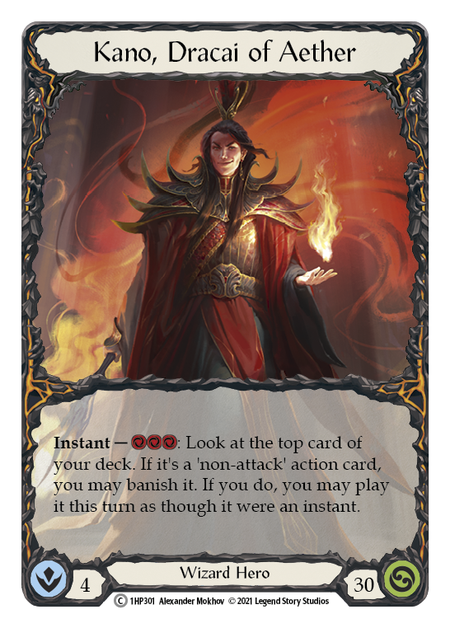
Kano’s ability to throw 30+ damage out of nowhere has earned him a reputation for winning from lucky top decks, or a deterministic combo you cannot block. This has led many to believe that beating a Kano is up to chance, and your decisions throughout the game will not influence the outcome.
This sentiment is utterly false.
My name is Ronán Sovitzky, better known as my discord name Blazing for Lethal. I have over 10,000 games on the Lord of Aether, and I am here to explain the ins and outs of beating a Kano, regardless of your skill level or that of the Kano you are playing. We will tackle basic Kano combo math, his power cards to watch out for, and how to approach each turn depending on your hero, equipment loadout, and game state.
If you're just getting familiar with Kano, you might want to hop back and start with this overview of what Kano's up to.
Allow me to give away all of the secrets! (Sorry Kano players)
by: Andrew Henderson
The Combo is the Key
To beat Kano, you must understand his game plan, which revolves around the Aether Wildfire combo. The Aether Wildfire combo has two main lines:
- Aether Wildfire, spell from Kano activation, Blazing Aether
- Aether Wildfire, Lesson in Lava, Blazing Aether
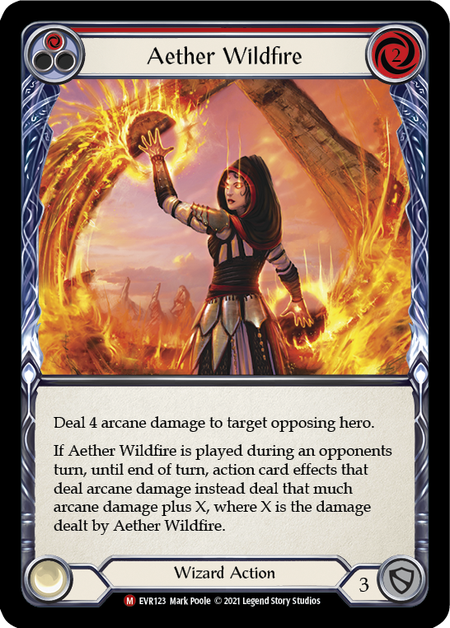
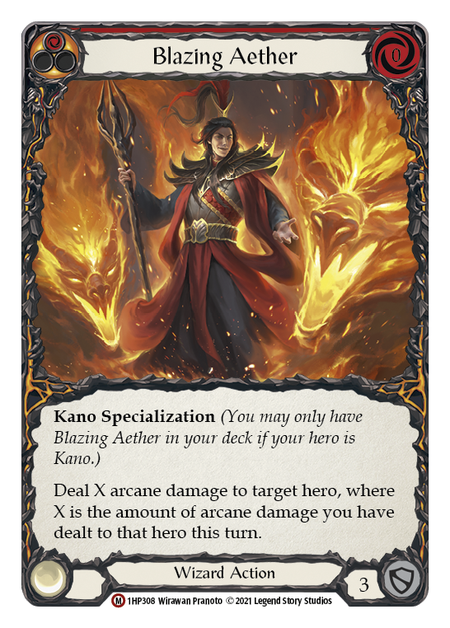
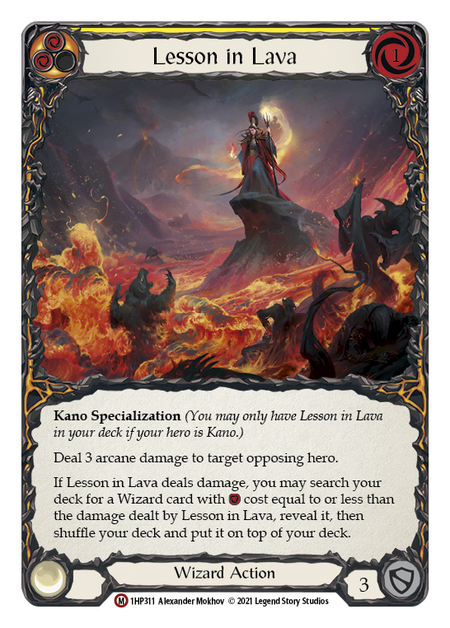
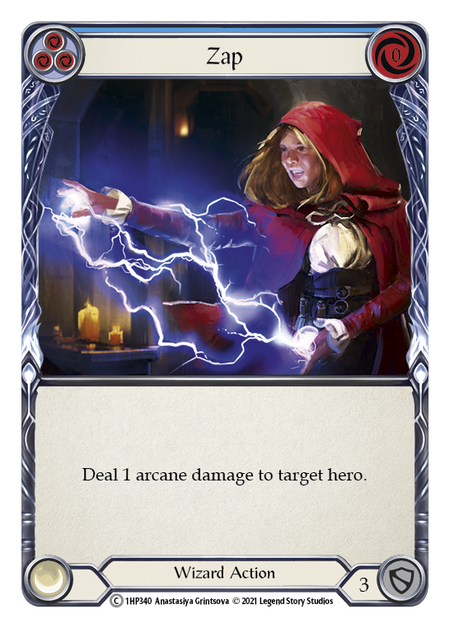
This sequence of spells will end the game 90% of the time, and everything Kano does throughout the game is designed to put you into a situation where one of these lines will kill you. As such, understanding the damage thresholds of these combos will help you make decisions for arcane barrier use, and how far you can extend. Let us take a closer look at these lines.
Everything Kano does throughout the game is designed to put you into a situation where one of these combo lines will kill you.
Aether Wildfire, Lesson in Lava, and Blazing Aether (which I refer to as a lesson line) has baseline damage of twenty-six: four from Aether Wildfire, seven from Lesson in Lava, and fifteen from Blazing Aether.
Wildfire, spell off the top, and Blazing Aether (which I refer to as a blind flip line) has baseline damage of twenty-two. We arrive at this number by assuming a random 1-damage blue spell is revealed with Kano. Four from Aether Wildfire, five from the top, and Blazing Aether for thirteen.
Now comes the important detail, stick your finger in one ear because I do not want what I am about to say to go in one ear and out the other.
For each point of damage above or below Wildfire's base of four, the ENTIRE combo will deal five more or five less damage!
If Wildfire deals 5 arcane damage, the lesson line goes from 26 to 31 damage. If Wildfire deals 3 arcane damage, the lesson line will only deal 21.

I am sure you can see the value of this knowledge. If you activate arcane barrier 3 against a Wildfire for 6 arcane, the Wildfire deals 3, meaning the lesson line will only deal 21 damage. If you are above 21 life and can pay for arcane barrier 3, the combo will not kill you.
Think about your favorite hero and the arcane barrier you typically run (more on this later). If you have arcane barrier 2, then a Wildfire for 6 will deal 4, which means your kill threshold will be 26 life for a lesson line. This continues with the rest of the spells in a Kano line: the second spell will modify the combo damage by 2 for each point of arcane barrier or buff applied, and a single point on Blazing Aether.
To summarize the math:

Silver Bullets?
Besides saying you have no control, the second biggest mistake when playing against Kano is tossing in Oasis Respites, extra Arcane Barrier, and assuming you will now start winning. Although Oasis Respite was a clean answer to Kano when first released, Kano players have adapted, and playing Oasis Respite in a hero not suited to the card makes their Kano matchup worse.
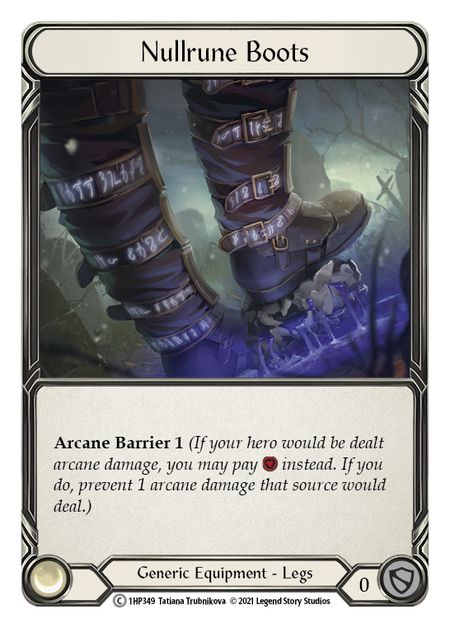
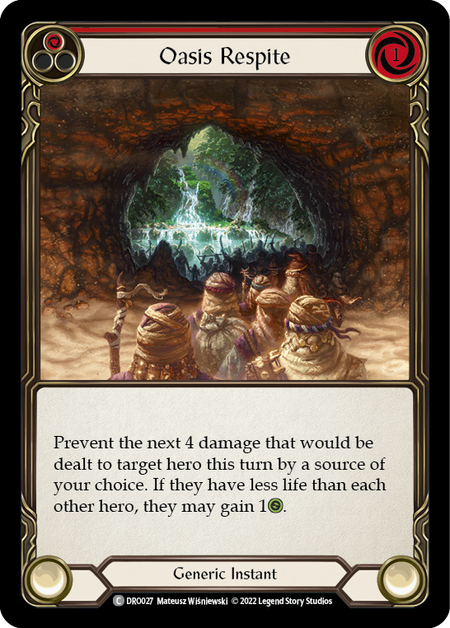
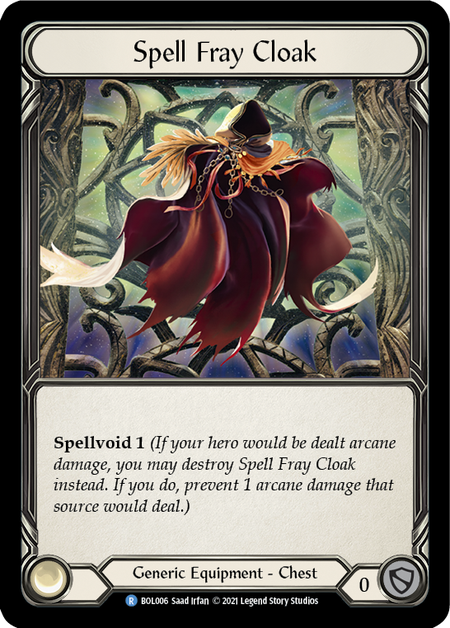
Arcane Barrier (AB) is the primary way to stop arcane damage, with each class having a unique set of equipment designed to tackle the profane arts. How much arcane barrier to take boils down to your hero's resource count. Draconic heroes run few blues, so attempting to run AB3 will sacrifice powerful equipment pieces for AB that you cannot afford to use well. Mechanologist and Guardian have a host of blues in the deck, allowing them to comfortably pay for AB3 while having resources left on their turn. As a rule of thumb, if you draw one blue per hand, you should not be running more than AB2.
You might think that adding Oasis Respite to low AB decks would be an easy choice, but this is a mistake. Sitting on Oasis Respite acts as an intellect penalty, as you must save Oasis for the Wildfire turn, preventing you from having a usable arsenal. This gives Kano extra time to find a second Wildfire or play more potions to go over the top. If you are concerned about Kano taking down your low AB hero, Spell Fray equipment can reduce Kano’s combo potential without straining your resources. Heroes like Azalea and Fai have found success replacing Tunic or Furnace with Spell Fray Cloak, as games rarely last long, and the free prevent five is well worth it. Heroes with lower resource counts and a weak Wizard matchup will find Spell Fray an easy, powerful addition to the matchup.

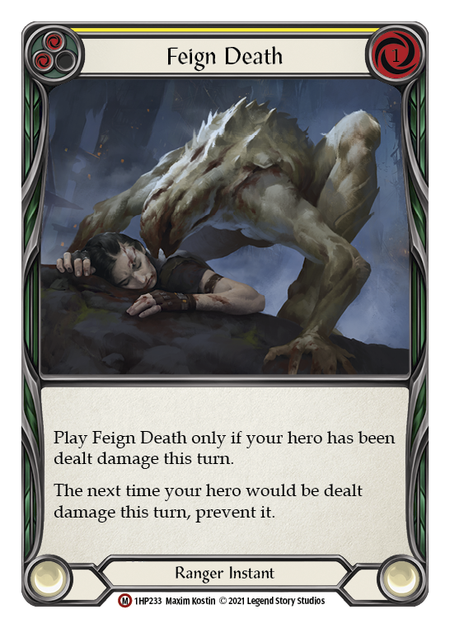
Prevention cards such as Oasis Respite, Steadfast, and Feign Death are frequently played to try and combat Kano with minimal effort. However, as stated above, the loss of an intellect point in faster decks will lose you more games than having the prevention cards will win. On top of that, a good Kano can easily sniff out if you are holding back prevention and will modify his combo turn to beat it. In short, running prevention cards in lower AB decks like Azalea, Fai, or Katsu is the wrong choice.
Slower decks like Warrior and Guardian are better suited to playing prevention cards. Despite their usefulness, these heroes are in a list of matchups where Kano will pitch stack. Instead of trying to chip you down, Kano will pitch away perfect combos that overwhelm even the most stalwart defenses. These stacks are designed to beat prevention! Holding onto prevention cards does nothing but prolong the game and allow Kano more time to perfect his stack and kill you.
In short, running prevention cards is a trap (more on these matchups later).
Using Arcane Barrier
Now comes the most important topic of this article, put that finger back in your ear.
Beating Kano is not about the combo turn, it is about every other turn in the game.
This might seem like an easy decision, but I cannot stress enough how important this concept is to the Kano matchup. When Kano combos, what he combos with, and how close to the threshold you are is dependent on how you play during the off turns.
What Cards Do You Care About?
Kano has a terrible card pool. Compared to the other heroes in the game, it is a wonder that he wins any event at all. If you ignore the combo cards themselves (Aether Wildfire, Lesson in Lava, and Blazing Aether) Kano’s good cards can be counted on one hand: Aether Spindle, Aether Flare, Sonic Boom, Tome of Aetherwind, and Kindle (a recent addition). That is truly pitiful; nonetheless, Kano leverages his paltry card pool like no other, and you must watch for them. Luckily, the cards you care about using AB against are on a neat list.
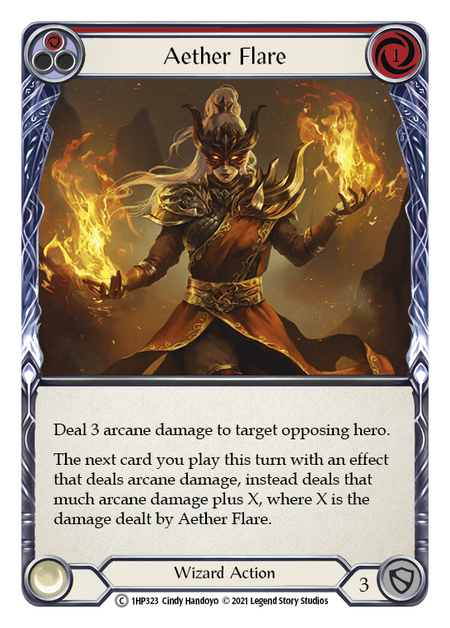
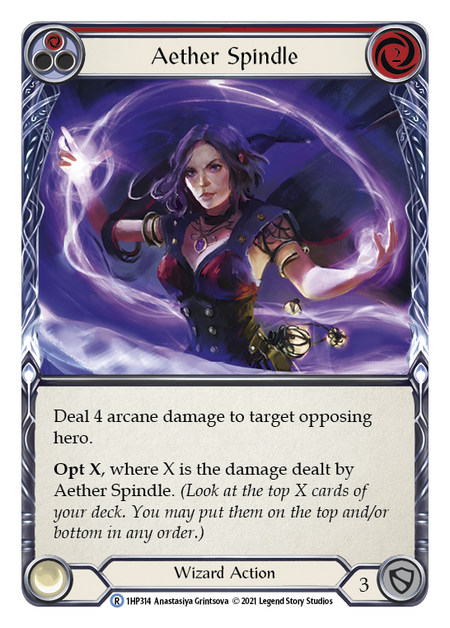


- Aether Spindle
- Aether Flare
- Sonic boom
- Lesson in Lava
These are the cards, in order, you will prioritize using arcane barrier against.
When do you use Arcane Barrier?
When Kano sends a card your way there are several items to analyze. The first is which card they send; Aether Spindle is a necessary block. It does not matter how badly you weaken your turn; you cannot let Spindle hit for five. The difference between seeing four or five cards in Kano is staggering. On the other hand, Sonic Boom or Swell Tidings have a much lower impact, and you could decide not to AB if your hand is especially good, or you cannot afford to both AB and play out a hand.
After deciding how impactful the card is, you must look at your hand and ask yourself how your next turn will function. If you have a single blue and need those three resources for a reasonable turn, pitching a red or yellow is acceptable - but you must consider how close to the threshold you are putting yourself in the process. This leads me to more rules of thumb:
- Do not pitch more than 1 card to Arcane Barrier, and
- Do not go shields down!
Nothing makes Kano happier than seeing the opponent lose two cards. Occasionally you are forced to - a prime example being red Aether Flare into a Spindle - but outside of rare cases like this, pitching away two cards is not worth losing an impactful turn. Holding up a card is more important than providing a window for Kano to launch his combo.
To further illustrate, do not let yourself go to zero cards in hand with no resources floating. Even if Kano has no combo in hand, he will check to see if something is on top. A medium or “scuffed” combo into zero resources is still all it takes to kill you, and it will be your fault.
The final question you must ask is how close to the threshold will Kano’s card put you. It is always safer to assume Kano is ready to fire than not, so taking damage down to the kill threshold for a strong turn is rarely the correct play. This becomes doubly important when Kano is at a low life total: the closer to lethal he gets, the more carefully you must sequence your turns. Kano tries to combo as late in the game as possible for the highest chance of success. When Kano stops defending at a low life total, be ready for him to fire his combo.
Does Kano have any other tells?
This leads to another important topic: reading Kano. An easy tell is if Kano is not blocking, the odds are that he is waiting for the most impactful on-hit or trying to kill you. Checking how close to the threshold you are is a quick way to determine which of these the Kano is playing for. Holding off your on hit for the final chain link, or saving it for the next turn, is an efficient way to force damage and make Kano waste his life.
Building on this concept, during the final turns of the game, do not go for a big flashy kill. If you have the chance to threaten lethal or near lethal without dumping your hand, do it. A good example is holding back a buff in Azalea; if you can threaten lethal with one or two pumps, do not play more. Once threatened with lethal, Kano is forced to decide if he is blocking or shooting. If Kano blocks, you are generally in the clear to dump your hand and drop-kick him to the shadow realm.
Cracking the Stacker
Another area we must discuss is what to do when Kano plans to pitch stack you. An unstoppable combo at the end of the game is a frightening concept, and it takes a different approach to defeat a stacking Kano.
First, you must understand when Kano is playing for a stack. There are easy tells to determine as such. If Kano is pitching away clusters of powerful cards, such as a Tome or Wildfire/Blazing pitched closely together - that Kano is pushing for a stack. Another clear tell is when Kano blocks heavily. Early in the game, Kano chips as much damage as he can; if you see him turtling up and playing potions alone while pitching strong cards, a stack is likely. Finally, if you see a defense reaction come from Kano’s side of the table, he is without a doubt pitch stacking.
Combating a stack requires a complete pivot in strategy. You do not have to worry as much about going shields down, Kano is pitching away the combo for later. With this knowledge, your game plan focuses on setting up the most powerful turns your deck can.
It is acceptable to have a weak turn to follow up with a powerhouse. A good example is swing hammer for six in Bravo, to ensure a dominated Crippling Crush the next turn. As Kano pitches away more power cards, you need to hold back fewer resources for AB. Since a stacking Kano focuses little on chip damage, you are unlikely to be anywhere near the threshold, allowing you to play with greater risk. Do not be shy about counting Kano’s deck - once he has about twenty cards left in the deck, he will be at or near stack. From this point onwards, slow down your turn cycle to smaller/fewer attacks and hold back all the AB your deck can. While the odds of surviving the stack are low, if you manage it, the odds of losing are even lower.
Throwing Water on the Fire
This article barely scratches the surface of playing against Kano - each hero could have an article written for an in-depth anti-Kano guide. If you remember nothing else from this article, please make note of these items.
- DO NOT GO SHIELDS DOWN
- DO NOT PITCH MORE THAN TWO CARDS TO AB
- KNOW YOUR AB KILL THRESHOLD
If you want more information on fighting Kano, or how Kano fights you, check out the Rathe Times’ other articles on Kano, or watch my videos on YouTube. Armed with this knowledge, I wish you the best in kicking Kano into the dirt, and until next time, have a FABulous life!





